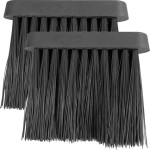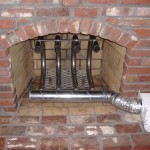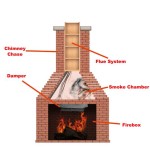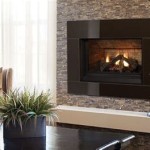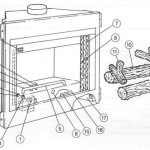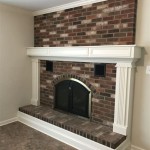Remote Controls for Fireplaces: Functionality, Types, and Considerations
Remote controls for fireplaces offer a convenient and efficient way to manage and enjoy the warmth and ambiance of a fire without needing to manually adjust settings directly at the unit. These devices can control various aspects of the fireplace, from ignition and flame height to temperature and fan speed, providing increased comfort and accessibility. This article explores the functionality, types, and critical considerations associated with fireplace remote controls.
The primary function of a fireplace remote control is to provide remote operation of the unit. This eliminates the need to physically reach the fireplace, making it particularly useful for individuals with mobility issues or when the fireplace is located in a hard-to-access area. Beyond basic on/off control, many modern remotes offer a range of advanced features enhancing user experience and energy efficiency.
Key Benefits of Using a Fireplace Remote Control
One of the most significant advantages of using a fireplace remote control is the enhanced convenience it offers. Users can easily adjust the flame intensity, activate the fan, or even program timed operation from the comfort of their seating position. This is especially beneficial during colder months when minimizing movement and maintaining a consistent room temperature is desired.
Enhanced safety is also a vital benefit. Remote controls allow for the quick and easy shut-off of the fireplace from a distance, which can be crucial in emergency situations. Furthermore, some remotes have features like child safety locks, preventing unauthorized use of the fireplace. These features contribute to a safer home environment, particularly for families with young children.
Energy efficiency is another crucial aspect. Many fireplace remote controls include thermostat functionality, enabling users to precisely regulate the room temperature and prevent over-heating. This can lead to significant energy savings over time, as the fireplace only operates as needed to maintain the desired temperature setting. Programmable timers are also frequently included, allowing users to set specific operating times for the fireplace, further optimizing energy usage.
Another advantage resides in the accessibility they provide to individuals with mobility limitations. Those who find it difficult to physically bend or reach the fireplace controls can easily manage it with a remote control. This promotes independence and comfort for individuals who may otherwise require assistance using the fireplace.
The integration of smart home technology is also an increasing trend. Some fireplace remote controls are compatible with smart home systems, allowing users to control the fireplace via voice commands or smartphone applications. This level of integration provides even greater control and convenience.
Types of Fireplace Remote Controls
Fireplace remote controls come in various types, each offering different functionalities and features. Understanding these variations allows users to select the most appropriate remote for their specific fireplace and needs.
On/Off Remote Controls: These are the most basic type of fireplace remote control, primarily designed for simple ignition and shutdown. They generally have only one or two buttons, offering minimal control beyond basic operation. These remotes are typically used with older or simpler fireplace models.
Thermostatic Remote Controls: These remotes include a built-in thermostat, allowing users to set a desired room temperature. The fireplace will automatically adjust its flame height or cycle on and off to maintain the selected temperature. Thermostatic remotes provide increased energy efficiency and comfort by preventing temperature fluctuations.
Modulating Remote Controls: These remotes offer more granular control over the fireplace's flame height. Users can adjust the flame intensity to achieve the desired level of warmth and ambiance. Modulating remotes provide a greater degree of customization compared to basic on/off models.
Programmable Remote Controls: These advanced remotes allow users to program specific operating schedules for the fireplace. Users can set different temperature settings for different times of the day, optimizing energy usage and comfort levels. Programmable remotes are especially useful for users who want to automate their fireplace's operation.
Universal Remote Controls: These remotes are designed to work with a variety of different fireplace models and brands. Universal remotes can simplify control by consolidating the functions of multiple remotes into a single device. However, compatibility may vary, so it is essential to check the remote's specifications before purchasing.
Smart Home Integrated Remote Controls: As smart home technology becomes increasingly prevalent, many fireplace remote controls are designed to integrate with popular smart home platforms. These remotes allow users to control their fireplace via voice commands or smartphone applications. This integration offers unparalleled convenience and control.
The choice of remote control depends on the specific fireplace model and the desired level of control. Basic on/off remotes are sufficient for simple operation, while thermostatic and modulating remotes offer greater control over temperature and flame intensity. Programmable and smart home integrated remotes provide the most advanced features and automation capabilities.
Important Considerations When Choosing a Fireplace Remote Control
Selecting the appropriate fireplace remote control requires careful consideration of several factors. Compatibility with the existing fireplace, desired features, and ease of use are all important aspects to evaluate. Neglecting these considerations can lead to dissatisfaction and potential compatibility issues.
Ensuring compatibility with the fireplace is the first and most critical consideration. The remote control must be compatible with the specific model and brand of fireplace. Check the fireplace's manual or consult with a fireplace professional to determine the correct type of remote. Incompatible remotes may not function properly or could even damage the fireplace's control system.
Next, evaluate the desired features and functionality. Determine the level of control needed over the fireplace. If simple on/off operation is sufficient, a basic remote control will suffice. However, if more advanced features like thermostatic control, modulating flame height, or programmable timers are desired, a more sophisticated remote control will be necessary.
Ease of use is also an essential factor. The remote control should be intuitive and easy to operate. The buttons should be clearly labeled, and the display should be easy to read. Consider the size and ergonomics of the remote, especially if users have limited dexterity or visual impairments. Simple and user-friendly interfaces are critical for ensuring a positive user experience.
Consider the remote's power source and battery life. Some remote controls use replaceable batteries, while others have rechargeable batteries. Evaluate the battery life and ease of battery replacement. If the remote uses replaceable batteries, consider the cost and availability of the batteries. Rechargeable remotes offer convenience but may require regular charging.
The range of the remote control is also an important consideration, especially if the fireplace is located in a large room or if the user plans to control the fireplace from a significant distance. Ensure that the remote control has sufficient range to operate the fireplace from the desired location. Obstructions like walls or furniture can reduce the remote's range.
Lastly, consider the cost of the remote control. Fireplace remote controls vary in price depending on their features and functionality. Set a budget and compare different models to find the best value. While it may be tempting to choose the cheapest option, investing in a higher-quality remote control with the desired features and reliability will likely provide a better long-term experience.
Before purchasing, reading reviews and seeking recommendations from other users can provide valuable insights into the remote's performance and reliability. Pay attention to reviews that mention compatibility issues, ease of use, and battery life. Knowledge gained from other users can assist in making an informed decision and avoiding potential problems.
Ultimately, careful consideration of compatibility, features, ease of use, power source, range, and cost will ensure that you select the most appropriate fireplace remote control for your specific needs. A well-chosen remote control can significantly enhance the convenience, safety, and energy efficiency of your fireplace.

Gas Fireplace Remotes More Fireplaceremotecontrols Com

Valor Gv60 Max Remote Receiver 4002251 4002422 G6r H3tv4 R3au Friendly Fires

Kingsman Fireplaces Gtmrcp Remote Control Millivolt

Skytech 1001th Thermostat Fireplace Remote Control

Paramount Slim Line Remote For Electric Fireplace Inserts Part Blt Rc1

Gas Fireplace Remotes More Fireplaceremotecontrols Com

20 14 028 Fireplace Remote Control

Skytech 3301 Timer Thermostat Fireplace Remote Control

Fireplace Thermostats Remote Controls Friendly Fires

Fireplace Remote Replacement For Skytech 1001th A And Procom

